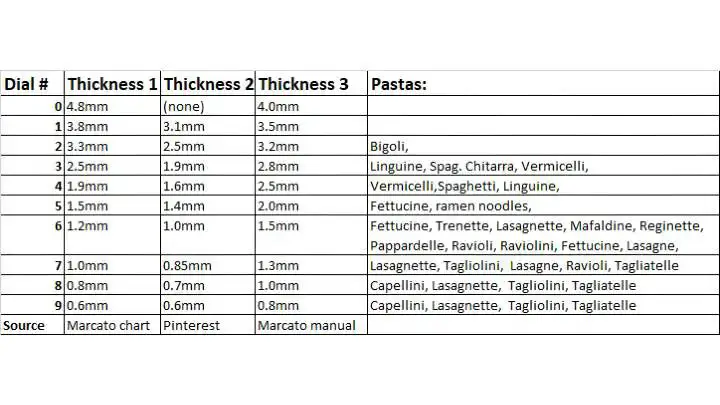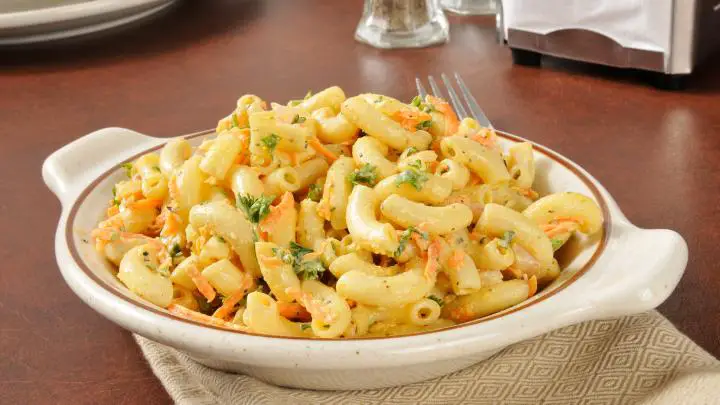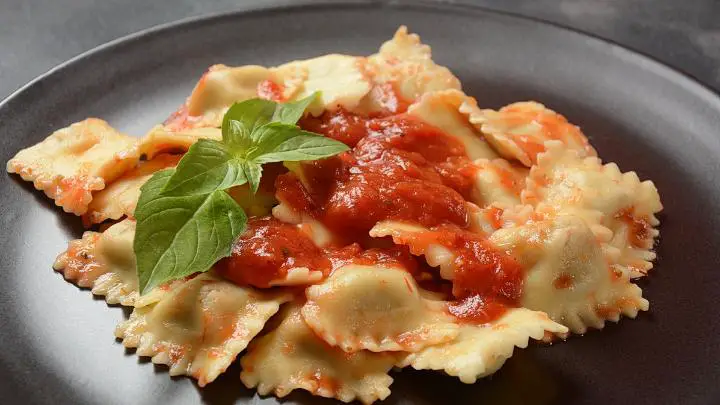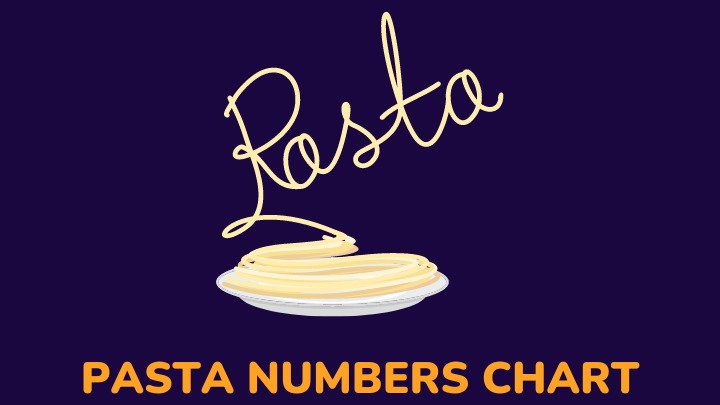Lots of people are unaware of what a pasta numbers chart is or how it relates to pasta. In truth, you’ll have to look closely at your pasta pack to realize it even has a number.
Pasta is a typical food in people’s diets. It’s great for filling you up, in addition to being extremely tasty.
Notwithstanding, many individuals are inclined to stick to the types of pasta that they are most familiar with, not realizing that each pasta has a number that differentiates it from other types of pasta.
So, here is a guide to help you better understand the pasta numbers chart, what it is, its importance, and the most popular pasta you will find at your local store.
What is a pasta numbers chart?
A table or graph known as a pasta number chart contains information about the width, shape, weight, and or sometimes thickness of various types of pasta.
However, the number chart varies according to the pasta brand. That is because different brands produce pasta in a variety of cuts, shapes, and sizes. As a result, there isn’t a single pasta number chart.
What do pasta numbers mean?
The numbers on a pasta package in supermarkets are special identification numbers manufacturers give to different types of pasta. If you look closely, you’ll find this number which often represents the shape and thickness.
However, there are no general specific numbers or regulatory requirements to separate the thickness of different types of pasta. Pasta numbers are specific to brands.
Additionally, there is also the “cut number” that corresponds to the pasta’s shape or cut. The pasta industry frequently employs the cut number system, which indicates the length, width, shortened, or extruder used to create that specific pasta shape.
What is a pasta thickness chart?

A pasta thickness chart is a table that explains the width, settings, and thickness of each pasta during production.
Pasta manufacturers frequently use this chart during production to determine the thickness of the pasta.
What are the Barilla pasta numbers?
These are numbers that the pasta manufacturer, Barilla, has assigned to each pasta shape to distinguish them.
These numbers are printed more prominently on the front side of the European Barilla pasta package. On pasta packages in North America, these numbers are displayed on the sides and are harder to see.
The numbering system for pasta shapes used by Barilla looks like this:
- Capellini no. 1
- Spaghettini no. 3
- Spaghetti no. 5
- Spaghettoni no. 7
- Vermicelli no. 8
- Bucatini no. 9
- Linguine no. 13
- Penne rigate no. 73
- Tortiglioni no. 83
- Fusilli no. 96
What are the different sizes of pasta?
Pasta is typically categorized according to:
- Length (pasta Lunga)
- Width (pasta Corta)
- Filling (Ripieno)
- Cooking method (Pastina)
- Stretching (Strascinati)
- Shape (Gnocchi/Gnocchetti)
However, “one man’s Gnocchetto can be someone else’s Strascinato” because of the variety of shapes and sizes and regional variations.
Why is the pasta number chart necessary?
The manufacturer needs the pasta number chat to distinguish between each type of pasta product.
Consequently, without even looking at the pasta, the producer or anyone else can identify the type of pasta using this chart.
Therefore, the past number chart helps in arranging each pasta based on its shape, size, etc.
The 6 most common pasta
Spaghetti

For many, this pasta is their go-to recipe. It is simple to prepare, pairs well with different sauces, and is just plain messy fun.
Spaghetti is also a long pasta whose fibers are incredibly thin. They come in flat or cylindrical shapes.
Macaroni

This pasta is a staple among young children. Macaroni and cheese is a crowd-pleaser whether made from scratch or prepared from a box.
The hollow of the tube-shaped macaroni pasta fills with whatever it is paired with, making it ideal for cream sauces or anything with melty cheese.
Penne

Penne is another very popular kind of pasta. Like angel hair pasta, penne pasta is made of short tubes with indentations cut along the sides.
The pasta’s ends are cut at an angle, making it perfect for pairing with a ragu or a Bolognese sauce. Also, penne is a dish that can be used in a cream dish and is very adaptable.
Lasagna

Despite popular belief, lasagna refers to the name of the dish’s thin pasta sheets rather than the actual dish.
Nonetheless, the most popular oven-baked dish is called the Lasagna al Forno, which consists of layers of lasagna, béchamel sauce, and cheese on top.
Ravioli

Pasta ravioli is a unique variety of pasta. To make ravioli, you need one long strip of pasta spread out. At unspecified intervals, add small amounts of meat, mushrooms, or any other fillings.
Linguine

This type of pasta is long, thin, and flat, with similar thickness from spaghetti to fettuccine. The best thing about linguine is its capacity to enhance clam-based sauces as well as other seafood dishes.
FAQs
What are the sizes of spaghetti?
The 25 to 30 cm (10 to 12 in) lengths are the most popular. This spaghetti length serves as the foundation for many pasta dishes, many of which are accompanied by tomato sauce, meat, or vegetables.
Which pasta is the smallest?
The smallest kind of pasta is called Pastina, which means “little pasta” in Italian. Also, it comes in various shapes, including Stelline.
What is short pasta called?
Short pasta is called Penne because of its shape. However, penne is an excellent pasta to pair with rich, creamy, or tomato-based sauces.
Which pasta is the healthiest?
Whole grains pasta is the healthiest type of pasta. This pasta typically contains more iron and B vitamins.
Furthermore, it is typically higher in fiber, manganese, selenium, copper, and phosphorus. Moreover, in comparison to refined pasta, whole-grain pasta has fewer calories, more fiber, and more of a few essential micronutrients.
Conclusion
The only purpose of a pasta number chart is to serve as a guide for distinguishing pasta shape, cut, size, and thickness.
Pasta numbers, on the other hand, are used on the packs to distinguish each pasta’s shape or thickness. This is decided by the manufacturer because there is no accepted standard for pasta numbering.
Likewise, a pasta thickness chart, like the pasta numbers chart, provides full details about each type of pasta and how thick it is.
I know you are a pasta lover. Learn the correct water-to-pasta ratio to make al-dente pasta.
Thanks for reading.
